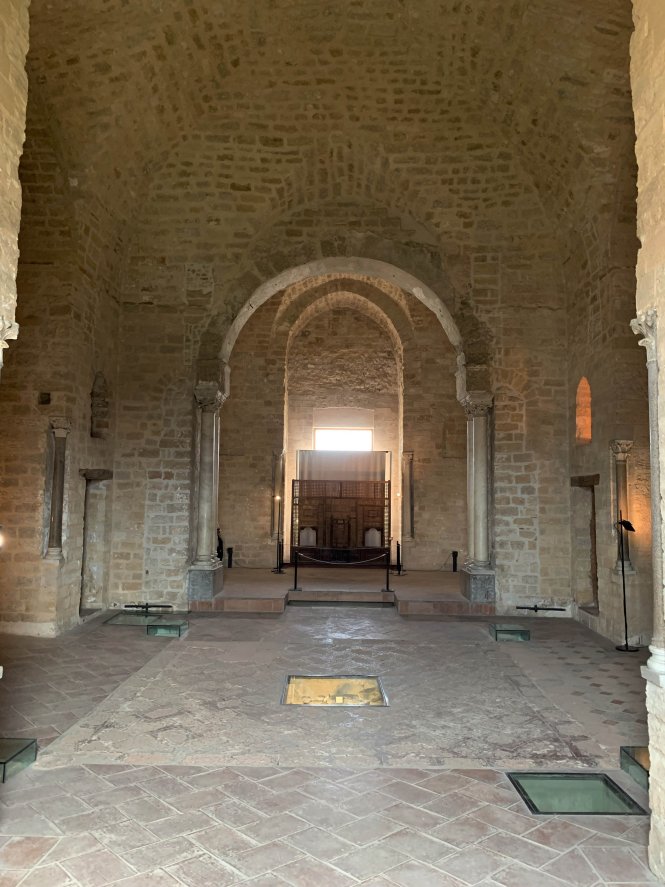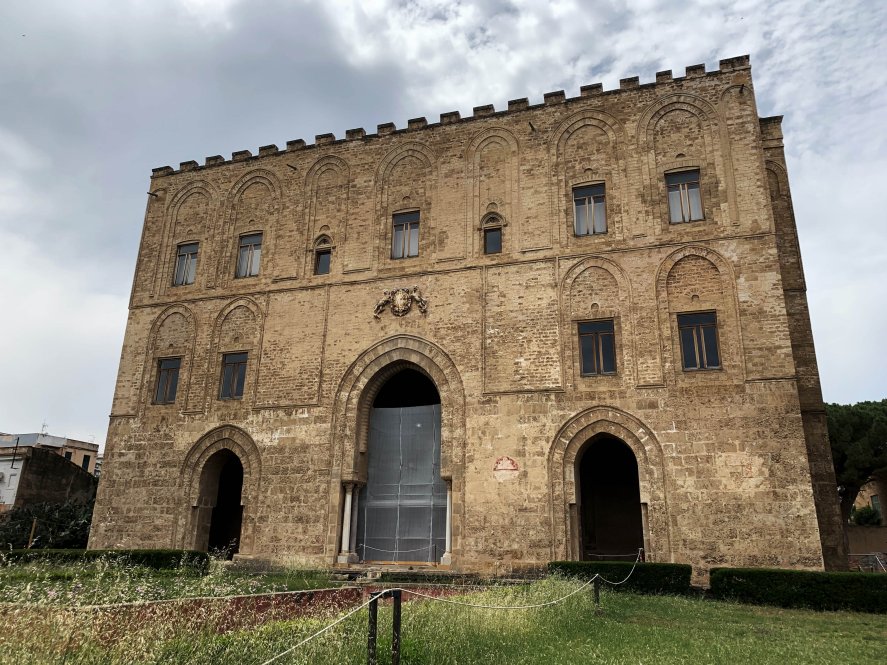Zisa
Zisa is claimed to be a corruption of the Arab
term Al-Aziz, meaning dear or splendid and this word is found in the
entrance as was usual in Arabic edifices of this era.
However, the original Carthaginian name for Palermo was Zis and the
site stands upon the ancient Phoenician necropolis of Zis (Palermo).
Castello Della Zisa in Palermo was supposedly taken from the emirs of the Fatimid
empire by Robert and Roger Hauteville in 1072. However, the current Zisa is an
Arabic palace begun by Arab craftsmen for King William I
of Sicily
(1154-66) before 1161. In that year he was
‘constructing a splendid palace in his gardens' when an
uprising killed his son, Roger. The palace was allegedly built
by William as he had built nothing to compare with his father's palaces
of Favara and Minenia so he decided that:
he too should have a palace constructed, which would be designed on a
larger and better plan so as to overshadow all his father's
buildings.
The work was done with amazing speed, but William died suddenly of dysentery before it could be finished.
The castle was completed by
his next son, William II (1166-89). A later chronicle states:
King William ordered to be
erected near Palermo a marvellous palace, built with admirable
technical competence, which he called Zisa, surrounded by fruit trees
and splendid gardens, rendered pleasurable by numerous fountains and
fishponds.
 King William's text around the monument stated:
King William's text around the monument stated:
Although
you will sometimes, you will see the most beautiful possession of the
most splendid of the realms of the world, of the seas and the mountain
that dominates there where peaks are tinged with narcissus and you will
see the great king of the century in a beautiful living room that
magnificence and gladness should suit him. This is the Mosta'Izz and
this palace the Aziz.
Mosta'Izz was apparently a nickname for King
William II (d.1189) meaning ‘eager for glory'. The
crenellations were added in the fourteenth century destroying some of
the Arabic inscription.
Description
The palace consists of a rectangle with a twin storey entrance over
which is a coat of arms supported by 2 lions rampant - the Hauteville
arms were azure, a bend checky argent and gules. Under the
internal arch of 4 columns is a fresco of mythological
figurines. Internally there is a cross vault with golden
mosaics, marbles and frescoes with a fountain dug into the
wall. The water from the fountain keeps the room cool and
flows out to a small lake in front of the building. An outer
wall with gateway still survives.
Why not join me here and at other Sicilian
castles? Information on this and other tours can be found at Scholarly
Sojourns.
Copyright©2019
Paul Martin Remfry


 King William's text around the monument stated:
King William's text around the monument stated: